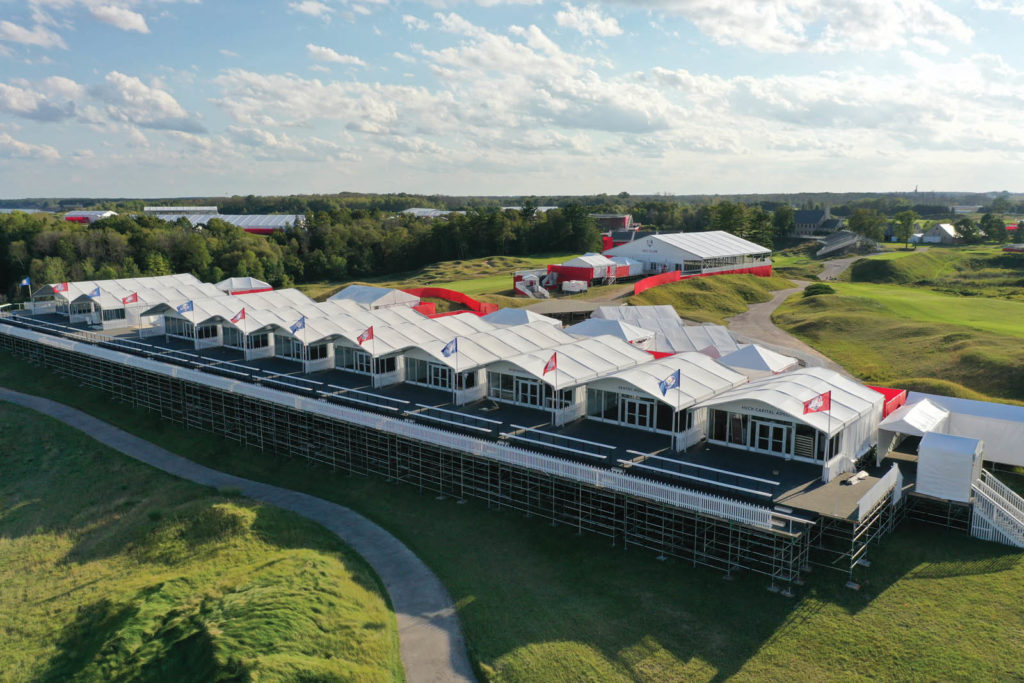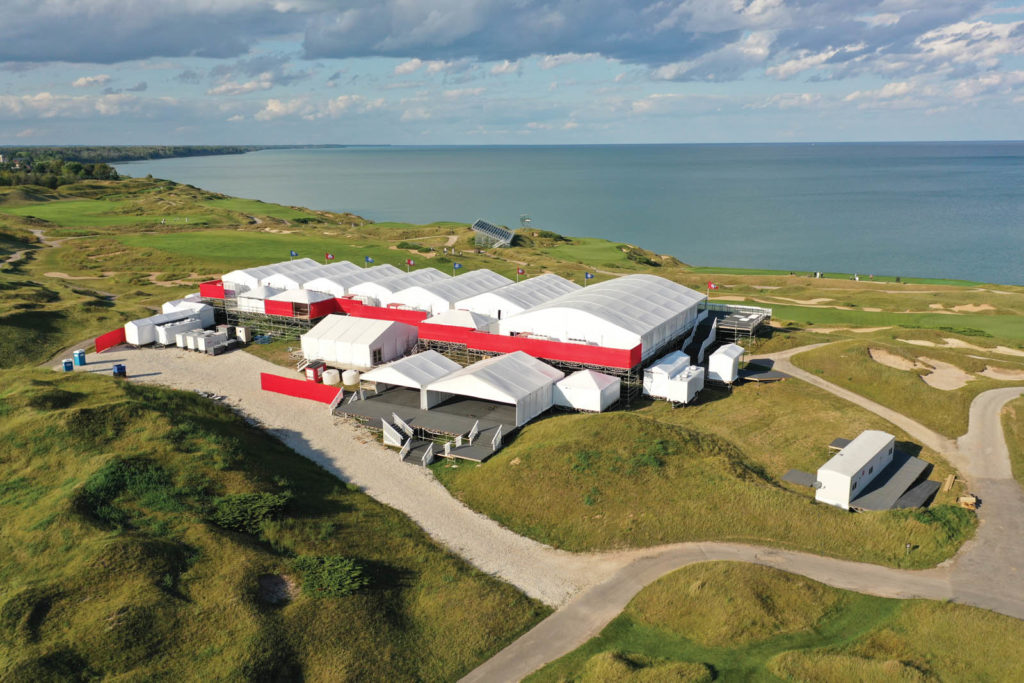
When the PGA of America released a request for proposal for an experienced tent and event rental company to handle structures for four of its ongoing major tournaments until 2025, Arena Americas in Oak Creek, Wis., submitted a bid and ultimately won the contract. Three of the events take place each year—the PGA Championship, the KPMG Women’s PGA Championship and the KitchenAid Senior PGA Championship. The largest tournament, The Ryder Cup, takes place once every two years—the venue alternating between the U.S. and Europe—and was scheduled to be held in 2020 but was postponed due to COVID-19. As of August, Arena Americas crews have been installing structures for the enormous September 2021 event to take place at Whistling Straits® in Kohler, Wis.
Scope, planning and time frame
Pitting the top 12 players from the United States against the top 12 players from Europe, this year’s three-day competition is expected to attract more than 40,000 fans per day. “The Ryder Cup is different from the other events we do for them because it’s so big,” says Niall Gaffney, general manager golf and seating division, Arena Americas. “It’s approximately two and a half times the size of the PGA Championship, which is in itself a huge event.”
Design, engineering and planning firm Stewart Inc., Raleigh, N.C., provided layouts to Arena Americas, which is building out the structures, flooring and carpet. Arena Americas also provides bleachers, player bridges, video board structures and ADA structures for the event. “The scope is enormous,” Gaffney says. “We provide approximately 1.2 million square feet of flooring, a million square feet of carpet and 600,000 square feet of tenting alongside the other structures.”
On May 24, a small contingent of the Arena Americas crew arrived to start taking deliveries and by June 1, the full crew began arriving to start the build-out, which includes 14 large hospitality areas with multiple structures in each area and a 40-by-145-meter tent structure for the championship shops—the largest tenting structure at the tournament. Installation crews topped out at 135 crew members, including approximately 80 subcontractors from several companies to fill out the flooring, structure and carpet crews.

Topographical challenges
On the shores of Lake Michigan, Whistling Straits is a course designed to echo the undulating hills of golf courses in western Ireland—which spells installation challenges for tenting crews. “The course is beautiful—and it sits on a lake so big it looks like an ocean,” Gaffney says. “But there’s not a flat piece of land on the course. It’s a challenge to get equipment out to where it needs to be, and it also means we are building on these incredibly challenging footprints.
“The entrance area structures are technically off the course, and that’s been reasonably easy in that it’s a flat piece of land,” he continues. “But the rest of the course is incredibly hilly, especially on the back nine. By the 15th, 16th and 17th holes, we’ve got some very tall structures with floors more than 30 feet in height.”
Planning for how the structures sit on the footprints is helped along by topography software that maps out measurements beforehand, but software has its limitations. “The architects do a lot of fantastic planning but things do also evolve on-site,” Gaffney says.

Planning for success
As the Arena Americas team members began planning for the Ryder Cup, they were helped along by a very unlikely (albeit unwelcome) source. “We did a huge amount of preparation for this event, as you can imagine,” Gaffney says. “It probably helped that we weren’t as busy as we would normally have been because of COVID. Arena Americas picked up some additional work, such as temporary hospitals, vaccination centers and construction tenting but overall having less event work gave us a bit of extra planning time for this event, which is good since it’s the first time we’ve done it.”
Among the planning agenda items were devising different COVID-response scenarios, including planning for no fans or reduced capacity. “Eventually, we were able to cancel those plans and prepare for full capacity,” Gaffney says. “Of course, we still have COVID-prevention measures in place in terms of how we work but we’re planning for pretty much a full-scale event at this point.”
Also spurred by COVID, the labor and materials shortages are affecting industries pretty much across the board, and the tent and event industry is no different. “Without a doubt, the most challenging thing in terms of the business are the labor market and materials shortages,” Gaffney says. “We use a lot of lumber—both plywood and beams. Plywood went up from about $22 a sheet a year ago to nearly $70 a sheet at its height, though it has subsequently come back down significantly in recent weeks. That and the fact that the labor market is so tight are two of the financial challenges we face. Now that COVID restrictions are lifted, the event industry is back on its feet, so to speak—which means there’s a lot of demand for people who can build floors and tents.”
Sigrid Tornquist is a Minneapolis, Minn.-based writer and editor, and a former InTents editor.
SIDEBAR: By the numbers
135 Arena Americas and subcontracted installers
1.2 million square feet of flooring
1 million square feet of carpet
600,000 square feet of tenting
 TEXTILES.ORG
TEXTILES.ORG


